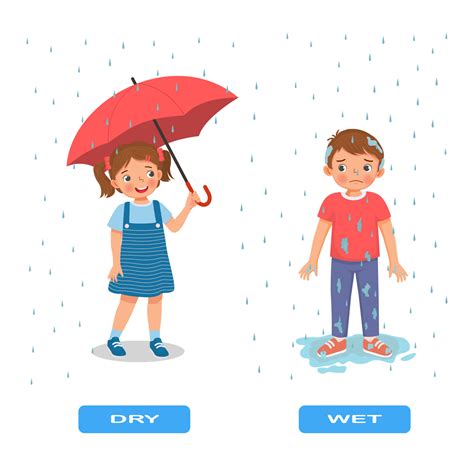Wet Hair Care: A Comprehensive Routine
1. Soak Your Hair: Begin by thoroughly soaking your hair with lukewarm water. Avoid using hot water, as it can damage strands.

2. Apply Conditioner: Choose a conditioner specifically designed for wet hair. Apply generously to mid-lengths and ends, gently massaging. Leave in for 1-3 minutes.
3. Detangle: Use a wide-toothed comb to gently detangle your hair from root to tip. Avoid brushing wet hair, as it is weaker and prone to breakage.
4. Rinse Thoroughly: Rinse your hair completely with lukewarm water. Ensure that all conditioner residue is removed.
5. Moisturize: Apply a leave-in conditioner or serum to damp hair. This will provide moisture and protect strands from damage.
Wavy Hair Styling: Enhancing Your Natural Texture
1. Use a Volumizing Mousse: Prior to blow-drying, apply a volumizing mousse to the roots of your hair. This will help create volume and lift.
2. Blow-Dry with a Diffuser: Use a diffuser attachment on your blow-dryer to enhance the natural waves of your hair. Hold diffuser about 6 inches away from your head, and move it in a circular motion.
3. Scrunch: Once your hair is about 80% dry, gently scrunch sections of your hair to encourage wave formation. Avoid brushing or combing, as this can break up the waves.
4. Air Dry: If possible, allow your hair to air-dry completely. This will help prevent frizz and preserve the natural waves.
The Science of Wet & Wavy Hair
Wettability: Hair is naturally hydrophilic, meaning it attracts water. This is why hair tends to get wet easily. The cuticle layer of the hair shaft, which is composed of scales, plays a crucial role in wettability. When the cuticle scales are smooth and aligned, water can easily penetrate the hair shaft.
Porosity: Hair porosity refers to the ability of the hair shaft to absorb and retain moisture. Low-porosity hair has tightly closed cuticle scales, making it difficult for moisture to penetrate. High-porosity hair has more open cuticle scales, allowing moisture to enter and exit easily. Wavy hair typically falls within the medium-porosity range.
Elasticity: Hair elasticity is its ability to stretch and recoil without breaking. Wavy hair generally has good elasticity, meaning it can be manipulated and styled without causing damage. However, excessive heat styling can compromise the hair’s elasticity.
Texture: Wavy hair is a type of hair texture that falls between straight and curly. It has S-shaped strands that form natural waves or curls. The wave pattern and curl definition can vary depending on factors such as hair type, porosity, and styling techniques.
Innovative Applications: Wet & Wavy Reimagined
Hydrophilic Textiles: Inspired by hair’s natural wettability, researchers are developing hydrophilic textiles that can absorb and retain large amounts of moisture. These textiles have potential applications in moisture management systems, cooling garments, and wound dressings.
Hydrophobic Coatings: On the other hand, hydrophobic coatings inspired by hair’s ability to repel water are used to create waterproof and stain-resistant surfaces. These coatings find use in various industries, including automotive, aerospace, and healthcare.
Advanced Hair Care: Wet & wavy hair care research has led to advancements in hair care products and techniques. Water-activated styling creams, leave-in conditioners specifically for wavy hair, and heat styling tools designed to minimize damage have emerged.
Tips & Tricks for Wet & Wavy Hair
1. Avoid over-washing your hair. Aim to wash 2-3 times per week, or as needed.
2. Use shampoos and conditioners specifically designed for wavy hair. Look for products that contain moisturizing and frizz-fighting ingredients.
3. Deep condition your hair weekly or bi-weekly to provide extra moisture and strength.
4. Detangle your hair before and after washing to prevent breakage.
5. Limit heat styling as much as possible. If you do use heat, apply a heat protectant spray first.
Comparison of Pros and Cons: Wet & Wavy Hair
Pros:
- Natural volume and movement
- Versatile styling options
- Less prone to tangles than curly hair
- Generally easy to manage
Cons:
- Can be prone to frizz in humid environments
- May require more time to style
- Can be more difficult to maintain than straight hair
FAQs on Wet & Wavy Hair
1. How often should I wash my wavy hair?
- Ideally 2-3 times per week, or as needed.
2. Is it okay to brush my wavy hair when it’s wet?
- No, avoid brushing wet wavy hair, as it is more fragile and prone to breakage.
3. What products are best for wavy hair?
- Shampoos and conditioners specifically designed for wavy hair, leave-in conditioners, styling creams, and heat protectants.
4. How can I reduce frizz in my wavy hair?
- Use anti-frizz products, deep condition regularly, and apply a leave-in conditioner or serum after washing.
5. Can I dye my wavy hair?
- Yes, but be sure to use a dye that is specifically designed for color-treated hair and consult a professional stylist for guidance.
